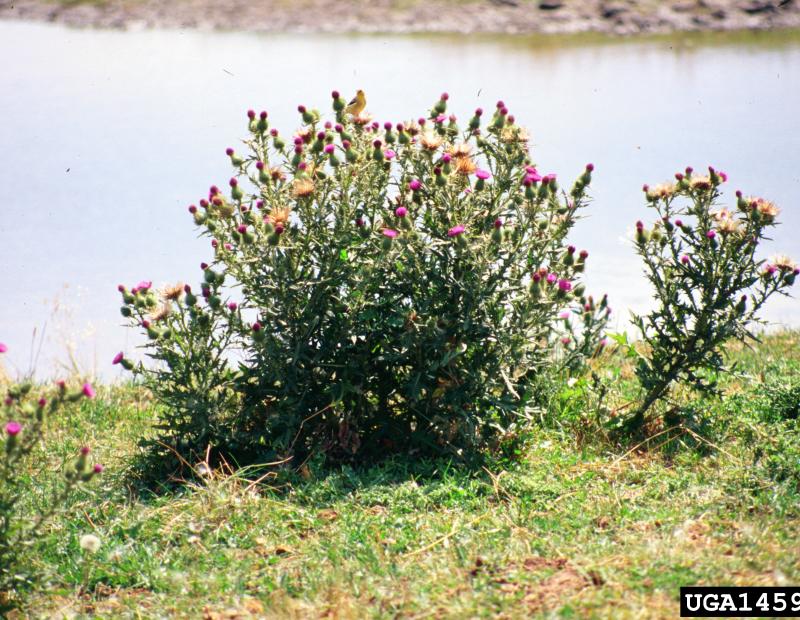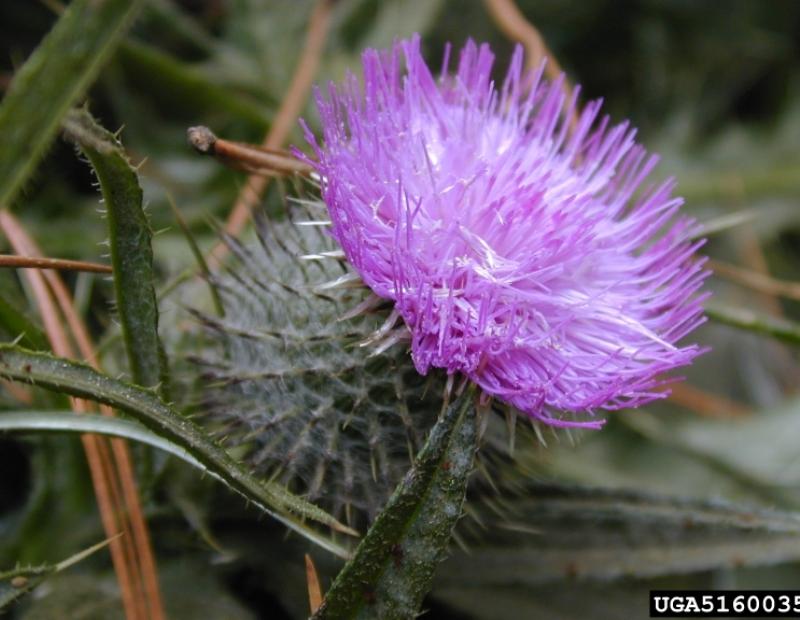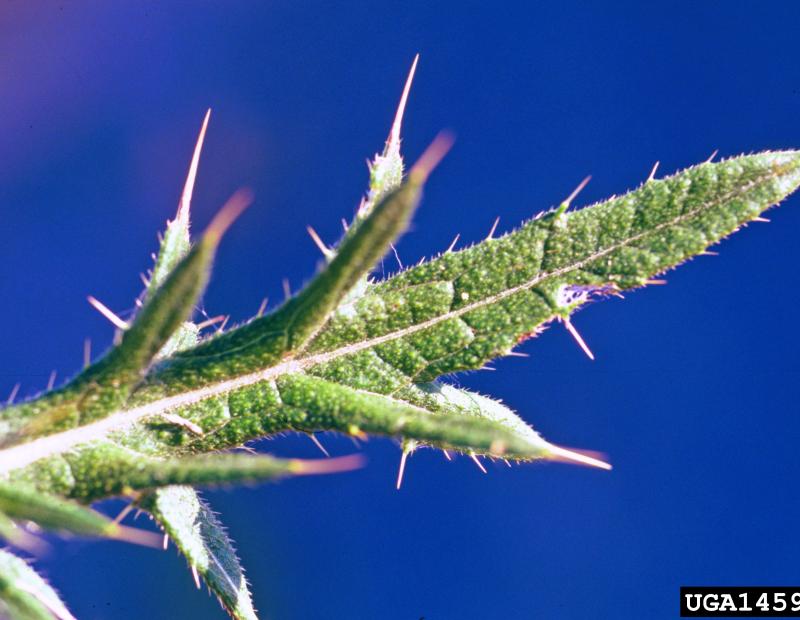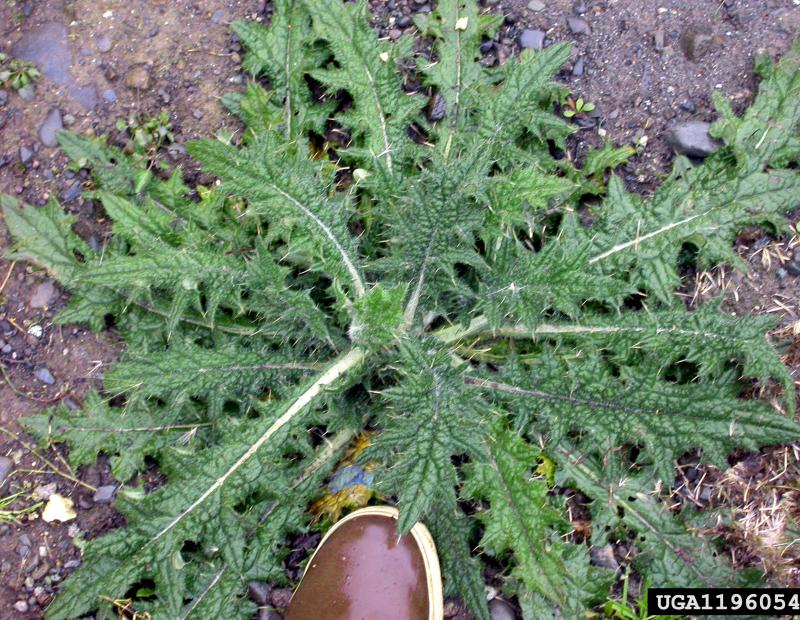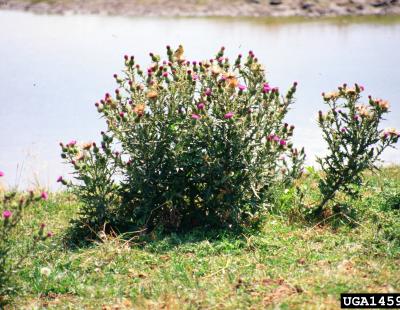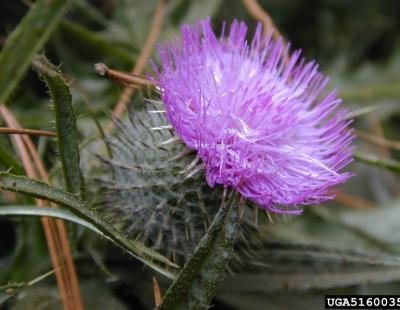- Terrestrial Plants
- Other Herbaceous
Bull thistle can cause large infestations and drive out native plants. It is mostly a prominent issue in disturbed areas including hay fields and pastures, and along trails, roads and vacant fields. Overgrazed pastures are susceptible to bull thistle invasion, and it can sometimes form dense stands that reduce productivity and stocking levels. These thistles may also dominate forest clear cuts and reduce growth of tree seedlings. Although the seeds are short-lived, they can persist in the soil for many years, making them hard to eradicate.
Bull thistle is native to Europe, western Asia, and northern Africa. It's believed to have been first introduced into the eastern United States during the 1800's. At this time, it has been established in all 50 states.
Cirsium vulgare is a branching, erect biennial that grows between 2 and 6 ft. tall. During the first year of growth, the rosettes form, and during the second flowering stems emerge. There are large, sharp spines on the leaves at the midrib and the tips of the lobes. The leaves are deeply grooved with coarse hairs on the top and wooly hairs on the underside. The leaf bases form spiny wings downwards along the stems. Beige , sharp thorns are a notable feature against other thistles. Pink to magenta flower heads have spines that extend all around the base, and flower from June to September.
Bull thistle grows best in sunny,open areas and can tolerate a wide range of conditions from moist to dry soils, and is typically found in disturbed areas such as roadsides, trails, logged areas, vacant and cultivated land and pastures.

